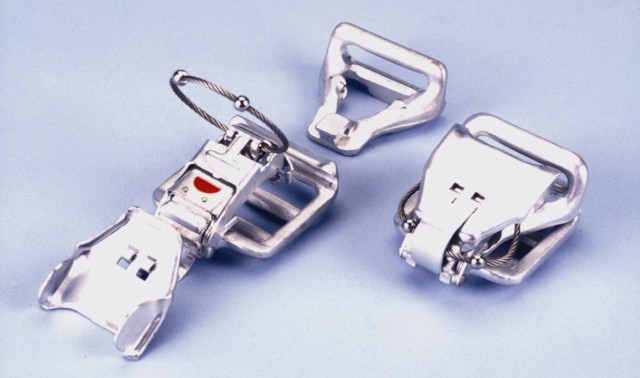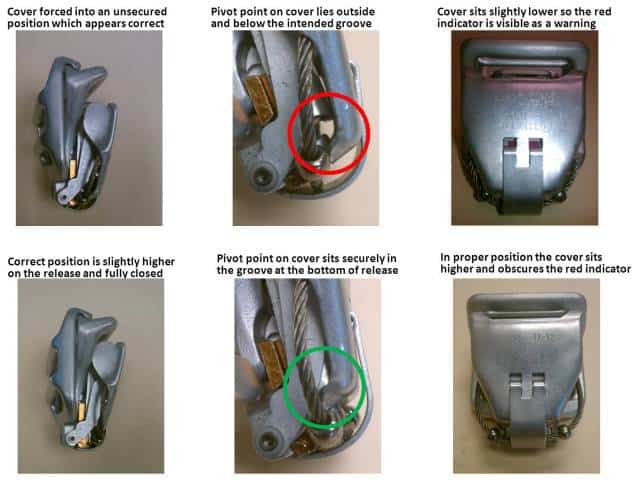
Here at Capewell we occasionally get requests for specific information about the hardware we design and manufacture. One of the most common request comes from military students seeking an advanced understanding of the parachute hardware they will soon be responsible for.
Though we’re always happy to speak with our customers, we thought putting some of the more frequently asked questions up here would make it easier for anyone to get the information they need. This will be the first of several such posts. We hope you find it useful!
FAQ #1: What is the red marking on the Capewell release?
This is by far the most common question we get. Part of the reason why is because the answer dates back to the original design of the Capewell release in the 1940’s.

You can see here in this vintage magazine cover that the red marking is clearly visible on the brand new T-1o troop parachute. Like today’s version, the original release was also a double action mechanism for added safety. But instead of using today’s pull lanyard it had a push button action and a slightly different cover plate. One of the reasons this design was later changed is because it was possible to close the cover in a way that it would not lock. The risk was that the cover could fall open during the jump and essentially turn the device from a double action into a single action only. This was obviously not ideal because it reduce the margin of safety the double action was designed for.
So in order to make sure the cover was closed correctly, a red “half moon” marking was painted underneath it. If the cover was in the wrong position the red would be visible through the two square holes in the center. A properly closed cover, secured in the locked position, obscured the marking entirely. Thus it became standard procedure to do a visual inspection right before the jump to make sure nobody was showing any red.

Today’s version of the Capewell release improved the cover and it is no longer prone to misuse. However, the red marking remains partly because this equipment check was written into the Field Manuals, but also because it is still technically possible to close the cover incorrectly. Although it is nearly impossible to do this accidentally, the cover can be forced into an unsafe position. The following series of images demonstrates how you can still use the red marking to tell if the cover is out of position.

